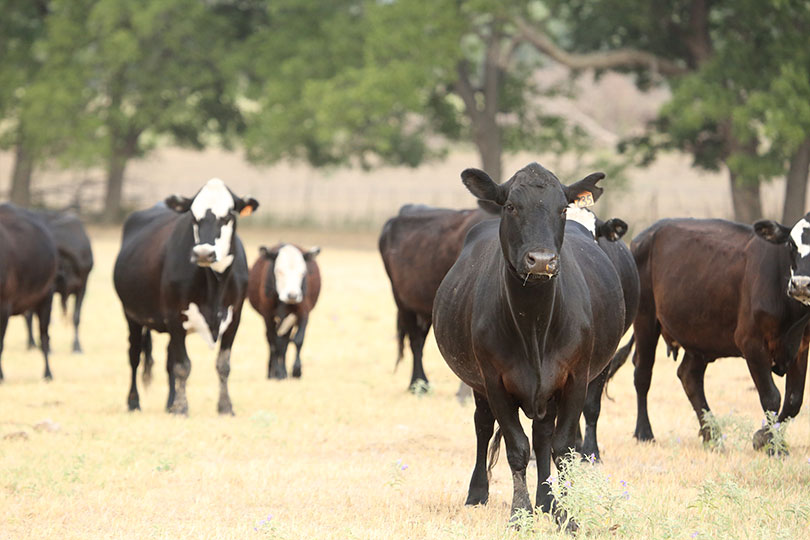Drought conditions and high input costs are two of the biggest concerns for cattle ranchers.
A recent Market Intel report from the American Farm Bureau Federation (AFBF) analyzes the current state of the cattle business and the implications for the sector in 2023.
Drought
Over 60% of the Western U.S. is suffering from drought. Eight states have reported 50% or more pasture and rangeland as poor to very poor, and Texas came in with about 90% rated as poor or very poor.
Cattle numbers
The number of all cattle and calves in the United States on July 1 was down 2% from a year ago to 98.8 million head.
The cattle on feed total for July 1 was slightly above last year at 11.3 million head. Placements in feedlots totaled 1.63 million head, 2% below this time last year. Marketings of fed cattle, the number of cattle sold for slaughter, were up 2% above 2021, totaling 2.06 million head in June. Steers and steer calves were down 1% from 2021, accounting for 61% of the total inventory.
Heifers and heifer calves on feed totaled 4.45 million head, up 3% from 2021. The increase in heifers entering feed lots is important. When drought causes pasture conditions to decline, heifers that would typically be kept for replacements are instead being placed into feedlots. More heifers being slaughtered means fewer heifers available to produce calves, which leads to a smaller cattle supply in 2023.
Inputs
Rising input costs are another factor in the decline of herd numbers. From the inputs used to make fertilizer to the inputs used to produce beef, costs are up and cutting into the bottom line. Ranchers are having to make decisions about how to handle increased input costs at the same time as drought continues, AFBF economists noted.
Beef prices and cold storage
Many consumers ask if tighter cattle supplies mean increased beef prices at the grocery store. There is a delay between when the supply changes occur to when the consumer sees a change in retail prices. Before cattle can be processed, they must reach market weight, which takes 18-22 months. The animal is then processed and hung for at least 10 days at 38 degrees Fahrenheit and turned into boxed beef. Boxed beef then enters the retail market or enters cold storage.
Total red meat in cold storage dropped 1% between May and June 2022 but is 24% higher compared to the same time period last year. Total pounds of beef in cold storage dropped 2% between May and June but was 29% higher than this time in 2021.
For more information on cold storage, view this Market Intel report.
Summary
Both drought and higher input costs are impacting cattle ranchers. The growing number of heifers in the feedlot has reduced the number of heifers that will be available for producing next year’s calves, which will lead to a lower cattle and calf inventory in 2023. AFBF economists noted that while tighter cattle supplies may elevate beef prices at the grocery store, high red meat and beef supplies in cold storage should help temper prices.

